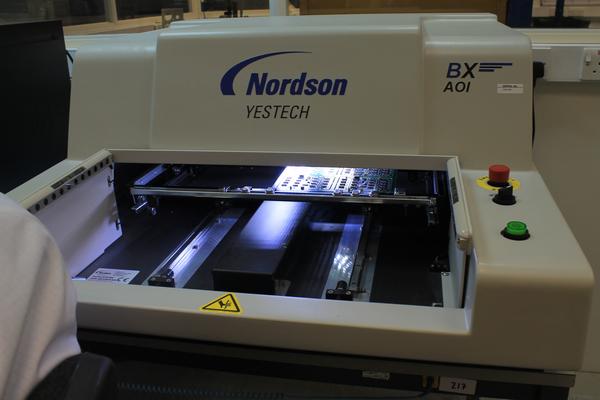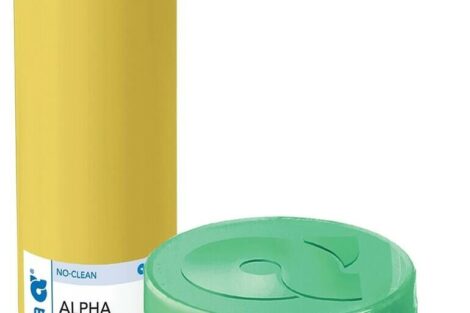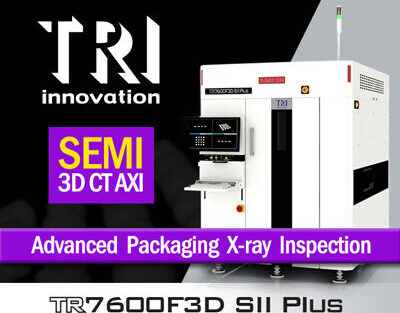Automated Optical Inspection (AOI) can be a powerful tool when effective quality management becomes an absolute priority. Below, Andy Bonner, Managing Director at Cupio Yestech Europe demonstrates this with a look at BEKA associates, who are using AOI within their manufacturing operation producing display instruments certified for safe use within potentially hazardous areas.
All manufacturers need effective quality strategies to avoid the potential safety risks, costs and loss of reputation arising from any product failure. This is particularly true for BEKA associates, an independent British company which designs and manufactures display instruments for use in potentially hazardous areas. Hazardous areas exist within many process plants including petrochemical, pharmaceutical, paint manufacture, pill coating, and battery manufacture where the presence of flammable liquids, gases or vapours creates an explosion risk. Combustible dusts such as those in granaries and food processing are also potential hazards which can be ignited and cause an explosion. The company instruments comply with international IECEx standards and the European ATEX Explosive Atmospheres Directive which, for protection by Intrinsic Safety, define the maximum energy that may be transferred to and may be stored within the instrument under specified fault conditions, thus eliminating the risk of igniting an explosive material. All aspects of instrument design and manufacture are controlled by a rigorous quality system. Design and quality compliance is verified by a third party Notified Body which includes design assessment against published IEC and ATEX safety standards, plus regular factory and product audits. The company manufacture an extensive range of display instruments for use with most process control signals including 4/20mA analogue current and both Profibus and Foundation fieldbus digital communications. The third party Intrinsic Safety certification of each instrument demands that every component upon which safety depends must be 100% inspected, to ensure compliance with the certified production documentation. This includes inspection of markings, part numbers, legends, and colour coding bands on components down to 0402 size. The company regards this inspection as an integral part of their manufacturing process. Previously, it was carried out by a human operator using a camera-based comparator, but it is now performed with a Nordson Yestech benchtop Automated Optical Inspection (AOI) system. As the PCBs within the instruments have become steadily more densely populated with ever-smaller and harder to read components, the threat of errors arising from incorrect inspection has grown accordingly. Therefore, BEKA regarded the move to AOI as essential to maintain their compliance capability. Their experience has shown that AOI has achieved this, with improved throughput and other benefits as well. We can understand these by looking at the manufacturing process that the company follows to maintain quality and compliance, and AOI’s impact on this.
The process uses a strategy that BEKA refers to as ‘Mass customisation’. Within this, they build a batch – or possibly a series of batches – of an instrument model in which the platform of components, PCB and display within an enclosure is mass produced, but then each individual instrument is finished by being tested, configured, scaled and calibrated for its particular application. BEKA benefits as much as possible from mass production economies, while each customer receives exactly the instrument he needs for his particular application. As part of this, the company may populate one batch of typically 600 pcbs. This quantity would have been a severe challenge for a human inspector to complete at reasonable speed without error, whereas the required 100% inspection becomes easily manageable for an AOI system that can complete 25,000 inspections in 40 seconds. Problems can be spotted and rectified early, well before the boards are actually needed for production. The AOI system generates a list of any issues spotted; the operator can then decide which need action and which can be ignored. AOI inspection is used at a couple of stages within the manufacturing process, which starts with bare PCBs and component reels being free-issued to a local CEM. The PCBs are returned with all SMT components mounted. These are inspected, after which all fault-free boards are available to be re-issued and populated with through-hole components and connectors. Upon return, the boards go through AOI again before being booked into stock ready for later production. Meanwhile any faulty boards can be returned to the manufacturer for timely repair or analysis, while the root cause of the problem can also be investigated and corrected.
While the AOI system removes the human element and its capacity for errors and delay, it also makes the inspector’s job more rewarding. Their task now comprises programming the machine for each new board and inspection sequence, while checking and entering component part numbers. This effectively becomes an early part of the QA process. Once inspection starts, component identification – ensuring the right part is in the right place – is key, but manufacturing faults such solder fillets on components are checked with the side as well as top cameras.
“The quality of support received from Cupio Yestech Europe has been excellent, right from when they left a machine with BEKA to evaluate without pressure for a couple of days” commented Ben Brough, Managing Director at BEKA associates. “We are also impressed with the equipment itself as we find it straightforward to use, robust, very repeatable and without excessive need for calibration-unlike the older comparator system that needed adjusting for every new board inspection. The AOI software has also proven to be stable.”
“Additionally, we feel that the AOI system helps to promote our credibility. Maintenance of our product certification requires that our procedures and drawings are audited every three months. The rigour imposed by the AOI system is reflected in this documentation. This helps to satisfy the auditors that our manufactured instruments truly comply with our certified documentation.”
“We look forward to progressively deriving further value from the AOI system, by extracting more reports and exploring more programming possibilities – particularly for better detection of faults such as soldering defects and lifted component legs.”
Share:










